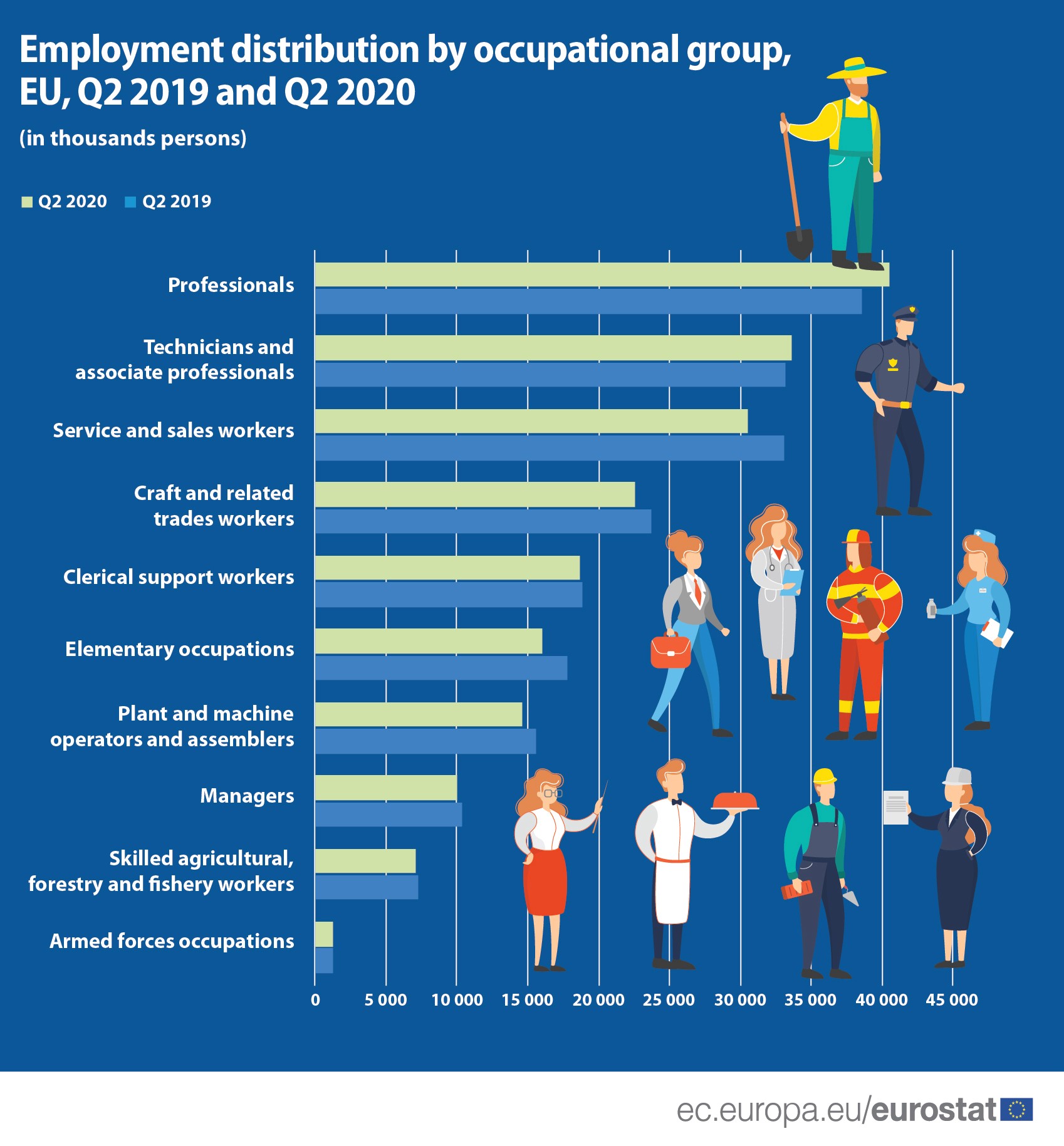In the second quarter of 2020, 195 million people were employed in the EU. Professionals, which encompasses people highly skilled in domains such as science and engineering, health, teaching, business and administration, information and communications technology and legal, social and cultural field, is the most common occupational group among EU workers (21% of total employment). They are followed by ‘technicians and associate professionals’ (17%), ‘service and sales workers’ (16%), ‘craft and related trade workers’ (12%) and ‘clerical support workers’ (10%).
At the other end of the scale, fewer than one in ten workers had an ‘elementary occupation’ (e.g. cleaners and helpers, labourers, food preparation assistants, street and related sales and service workers) (8%), or were working as ‘plant and machine operators and assemblers’ (7%), ‘managers’ (5%) or ‘skilled agricultural, forestry and fishery workers’ (4%). The low percentage of people employed in the armed forces (1%) is partly due to the exclusion of conscripts from this survey.
Among the Member States, ‘professionals’ was the most common occupation for 19 Member States. ‘Service and sales workers’ was most common in four Member States, ‘skilled agricultural, technicians and associate professionals’ in two and ‘Forestry and fishery workers’ in just one Member State.
Source dataset: lfsq_eisn2
EU employment dropped by 2% in the second quarter of 2020, from 200 million a year earlier. The sharpest decreases concerned people in ‘elementary occupations’ (-10%), ‘service and sales workers’ (-8%), ‘plant and machine operators and assemblers’ (-6%), ‘craft and related trades workers’ (-5%) and ‘managers’ (-3%). However, the number of people employed as ‘professionals’ rose (+5%) as did to a lesser extent, ‘technicians and associate professionals’ (+1%).
Notes:
- Occupations are presented as classified under ISCO-08.
- Data not available for Germany. Due to technical issues with the introduction of the new German system of integrated household surveys, including the Labour Force Survey (LFS), the figures for Germany for the first and second quarter 2020 are not direct estimates from LFS microdata, but based on a larger sample including additional data from other integrated household surveys. For more information, see here.
- The European Union (EU) includes 27 EU Member States. The United Kingdom left the European Union on 31 January 2020. Further information is published here.
- For further information, please refer to the Statistics Explained articles on Employment - quarterly statistics and Employment in detail - quarterly statistics.
To contact us, please visit our User Support page.
For press queries, please contact our Media Support.

